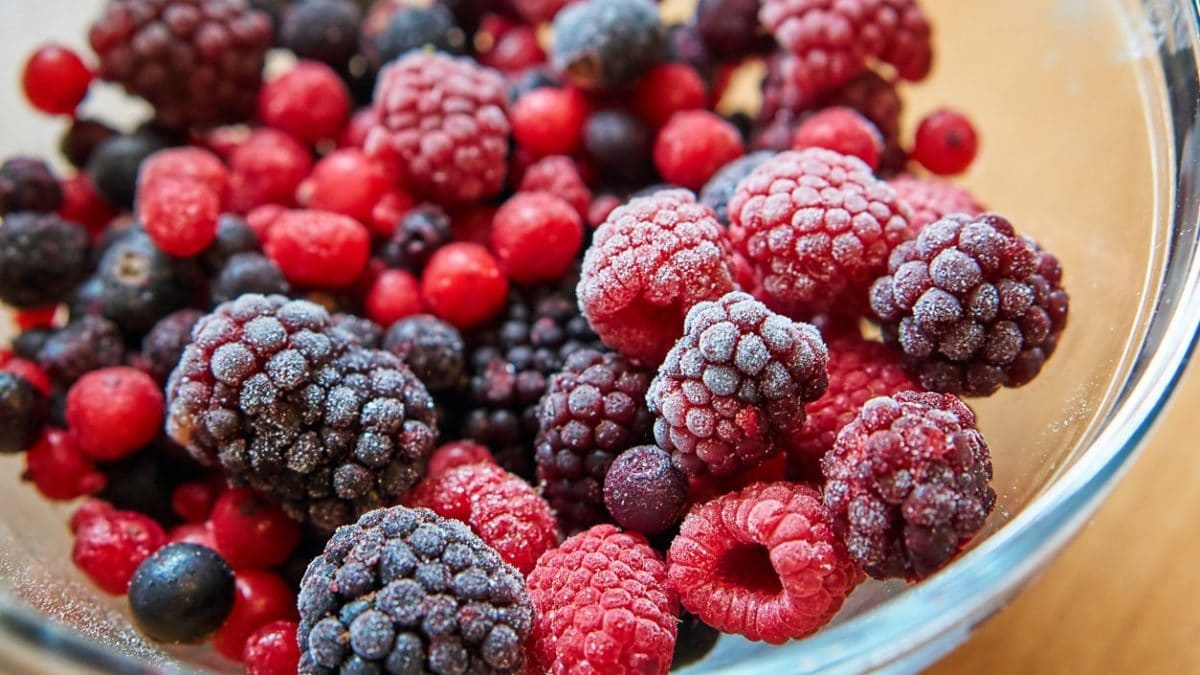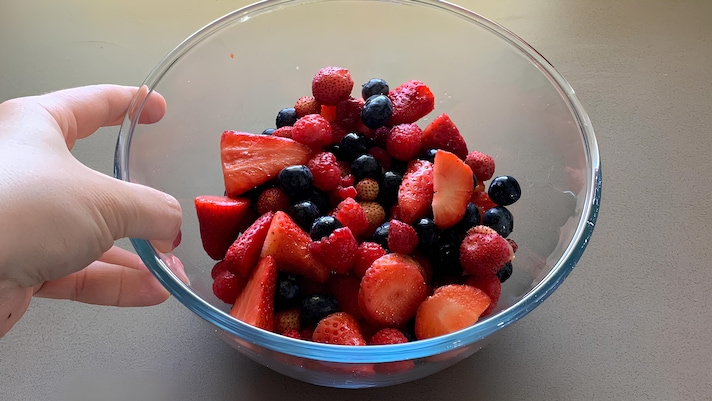
Berries are a much-loved food: small, colorful and full of flavor and beneficial properties, they lend themselves to a wide variety of preparations, from simple fruit salads to silky coulis, to delicious and refined desserts, such as mousse and cheesecake. A flaw? They are not available all year round and, for this reason, frozen berries in bags come to our rescue, easy to find at the grocery store and simple to use as valid substitutes. Be careful, however: they should only be consumed after cooking, and not raw, for food safety reasons. Let's see what they are.
Frozen Berries: The Danger of Contamination
Frozen berries may contain pathogenic microorganisms that are potentially dangerous to human health: in fact, these products (both in the U.S. and abroad) are frequently subject to precautionary recalls by health authorities for possible contamination, particularly from norovirus and hepatitis A. The first, also known as the Norwalk virus, manifests itself as a highly contagious viral gastroenteritis, which is transmitted by air and inhalation, by direct contact (particularly with the hands) and by eating compromised foods: the symptoms are vomiting, diarrhea, stomach cramps and since it survives in the air, it is easy for episodes to affect people who are together in closed environments, from the home to nurseries, nursing homes, hospitals, but also restaurants and cruise ships. The second, on the other hand, is a disease that affects the liver, with the virus that can be found, among other foods such as raw fish or cold ready-to-eat foods, also in raw and poorly washed fruit and vegetables.

How to Consume Frozen Berries Safely
At the beginning of 2013, an increase in hepatitis A cases in the United States, linked to the consumption of uncooked frozen mixed berries, led the Centers for Disease Control and Prevention (CDC) and Food and Drug Administration (FDA) to issue recommendations on safe berry consumption. They advised consumers to cook frozen berries thoroughly before eating, whether as ingredients in smoothies, sauces, desserts, or as toppings. The recommended safety measure is to boil the berries at 212°F (100°C) for at least 2 minutes, ensuring that any potential harmful pathogens are killed by heat. Additionally, it’s important to clean all utensils and surfaces used during preparation to avoid contamination. Pathogens that may be present on frozen berries due to contamination during harvesting, processing, or packaging can survive at low temperatures but are effectively destroyed by cooking. Frozen berries can also be safely heated in a microwave or pan. It is worth noting that this issue primarily involves berries from commercial production lines. While food safety should always be a priority, it is much less likely to be a concern with berries that are freshly picked and frozen at home.
Is It True That if Frozen They Increase Their Anthocyanin Levels?
There is no solid scientific evidence that freezing/deep-freezing berries increases the amount of anthocyanins in them, although this information has been around for a long time. At most, freezing, if done properly, is generally considered a good way to preserve the anthocyanin content and other nutrients in berries.
- Higher concentration due to water loss: During freezing, some of the water in berries can turn into ice crystals. This process may lead to a slight concentration of anthocyanins and other solid compounds per unit of weight remaining. However, the total amount of anthocyanins in the fruit does not increase.
- Better bioavailability: Some older or popular sources suggest that the formation of ice crystals during freezing may break the cell walls of the fruit, making the anthocyanins more "bioavailable" (more easily absorbed by the body). However, this hypothesis is not widely supported by conclusive scientific studies on the increase in the amount of anthocyanins.
- Stability of anthocyanins: Blast freezing (industrial freezing) is an effective method to keep anthocyanins stable over time, preventing their degradation that could occur at room temperature or during improper storage. This means that frozen berries retain a similar amount of anthocyanins to fresh fruits at the time of freezing.
Frozen Berries: A Wild Card in The Kitchen
Frozen berries are still an excellent resource in the kitchen. Their convenience is indisputable: they are available all year round, ready to use, they allow you to overcome seasonality and prepare the most diverse recipes even in the months when fresh blackberries, raspberries, currants and blueberries are unobtainable or too expensive. Furthermore, this version allows you to reduce waste, because it can be used in precise portions without the risk of deterioration. Once cooked, berries maintain most of their organoleptic properties: compared to fresh ones, they have a softer consistency and a sweeter flavor. Green light for toppings for panna cotta or other spoon desserts, purees for semifreddo or cheesecake, as well as fillings for strudel or tarts.
;Resize,width=767;)
